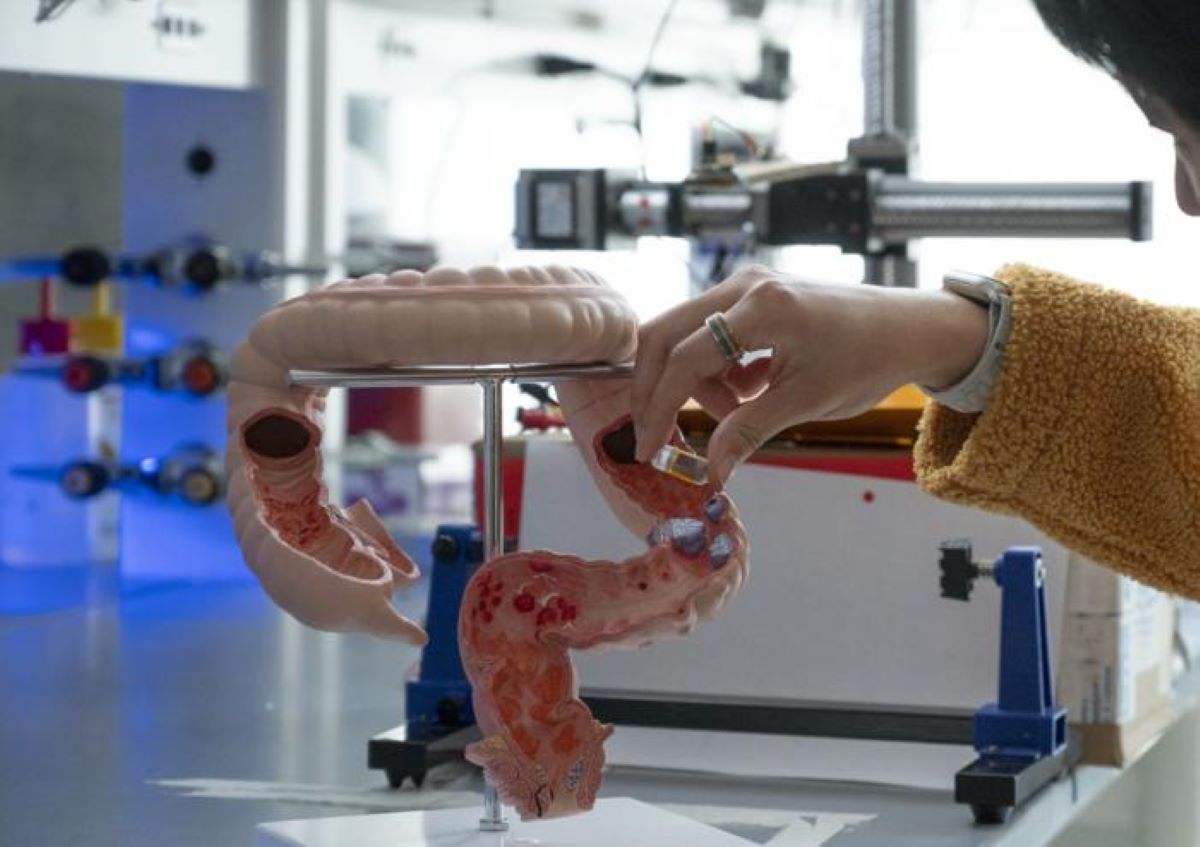Fitness
AI-Powered Pills Track Gut Health in Real Time – Neuroscience News

Summary: Scientists have created an AI-powered system to track ingestible devices that monitor disease markers in the gut. This non-invasive technology could help individuals monitor their GI tract health at home.
The system uses a wearable coil and AI to precisely locate the device and measure gas concentrations. Researchers aim to refine the device for future human trials.
Key Facts:
- AI-powered system tracks ingestible devices for monitoring gut health.
- Wearable coil enables real-time, precise location tracking and gas measurement.
- Future tests will focus on refining the device and conducting human trials.
Source: Cell Press
Scientists at the University of Southern California have developed an artificial intelligence (AI)-powered system to track tiny devices that monitor markers of disease in the gut.
Devices using the novel system may help at-risk individuals monitor their gastrointestinal (GI) tract health at home, without the need for invasive tests in hospital settings.
This work appears June 12 in the journal Cell Reports Physical Science.
“Ingestibles are like Fitbits for the gut,” says author Yasser Khan, assistant professor of electrical and computer engineering at the University of Southern California. “But tracking them once swallowed has been a significant challenge.”
Gas that is formed in the intestines when bacteria break down food can offer insights into a person’s health. Currently, to measure GI tract gases, physicians either use direct methods such as flatus collection and intestinal tube collection, or indirect methods such as breath testing and stool analysis. Ingestible capsules—devices that a user swallows—offer a promising alternative, but no such technologies have been developed for precise gas sensing.
To tackle this problem, Khan and colleagues developed a system that includes a wearable coil, which the user can conceal under a t-shirt or other clothing. The coil creates a magnetic field, which interacts with sensors embedded in an ingestible pill after it has been swallowed.
AI analyzes the signals the pill receives, pinpointing where the device is located in the gut within less than a few millimeters. In addition, the system monitors 3D real-time concentrations of ammonia, a proxy for a bacteria linked with ulcers and gastric cancer, via the device’s optical gas-sensing membranes.
While previous attempts to track ingestibles as they journey through the gut have relied on bulky desktop coils, the wearable coil can be used anywhere, says Khan. The technology may also have other applications beyond measuring GI tract gases, such as identifying inflammation in the gut caused by Crohn’s disease and delivering drugs to precisely these regions.
The researchers tested the system’s performance in a variety of mediums that mimic the GI tract, including a simulated cow intestine and liquids designed to replicate stomach and intestinal fluids.
“During these tests, the device demonstrated its ability to pinpoint its location and measure levels of oxygen and ammonia gases,” says Khan. “Any ingestible device can utilize the technology we’ve developed.”
However, there are still improvements to be made to the device, says Khan, such as designing it to be smaller and to use less power. Next, as they continue to hone the device, Khan and colleagues plan to test it in pigs in order to study its safety and effectiveness in an organism with human-like biology.
“Successful outcomes from these trials will bring the device nearer to readiness for human clinical trials,” says Khan.
“We are optimistic about the practicality of the system and believe it will soon be applicable for use in humans.”
About this Artificial Intelligence research news
Author: Kristopher Benke
Source: Cell Press
Contact: Kristopher Benke – Cell Press
Image: The image is credited to Khan Lab at USC
Original Research: Open access.
“3D gas mapping in the gut with AI-enabled ingestible and wearable electronics” by Yasser Khan et al. Cell Reports Physical Science
Abstract
3D gas mapping in the gut with AI-enabled ingestible and wearable electronics
Highlights
- Design of a wearable, AI-enabled mm-scale localization platform for ingestibles
- An ingestible electronic pill for gas sensing in the gastrointestinal tract
- Oxygen and ammonia measurements with the pill are demonstrated
- The proposed system offers a convenient way to assess gastrointestinal gas profile
Summary
Gas measurements in the gastrointestinal (GI) tract aid in the diagnosis and continuous monitoring of disorders such as irritable bowel syndrome, inflammatory bowel disease, and food intolerances.
Traditional methods for measuring and locating these gases are often invasive, typically requiring hospital-based procedures. Ingestible electronics provide a more convenient solution, yet locating these devices remains challenging.
Here, we present a wearable platform that implements a magnetic-field-based 3D localization of ingestibles with millimeter-scale resolution:
Our ingestible pill, equipped with optoelectronic gas sensors, can detect oxygen (O2) in 0%–20% and ammonia (NH3) in the 0–100 ppm concentration range.
The NH3 measurements can serve as a proxy for identifying Helicobacter pylori, a bacterium linked to peptic ulcers, gastritis, and gastric cancers.
Overall, this work aims to empower patients to conveniently assess their GI gas profiles from the comfort of home and manage digestive health.


)






